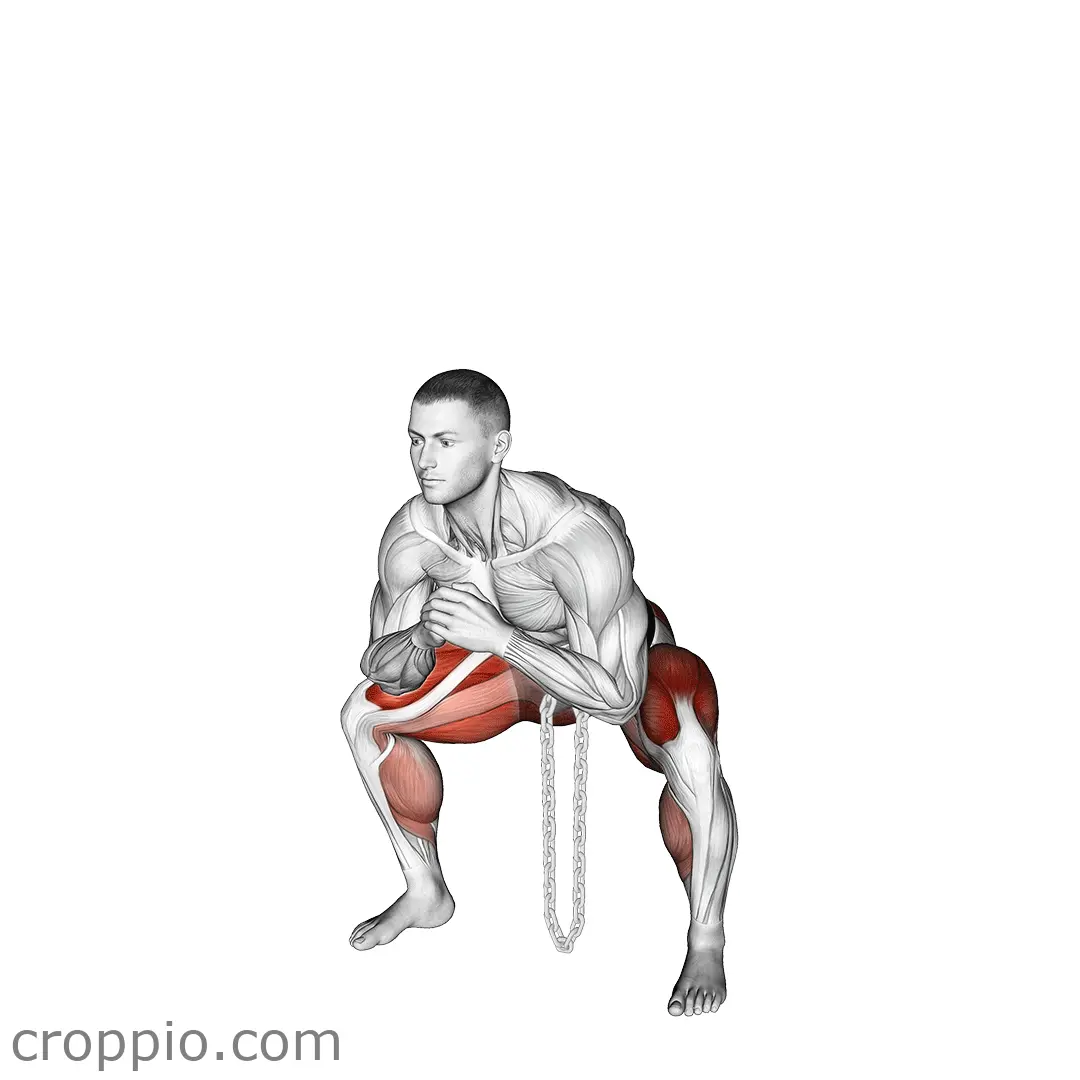Kettlebell Overhead Squat

Muscles Involved
The kettlebell overhead squat is a comprehensive exercise that primarily targets the lower body muscles, specifically the quadriceps, hamstrings, glutes, and calves. Additionally, it significantly engages the core for stabilization, involving the rectus abdominis, obliques, and transverse abdominis. The overhead position of the kettlebell activates the deltoids and trapezius in the shoulders and upper back, enhancing overall muscle synergy and balance. This exercise offers a full-body workout that improves mobility, strength, and coordination.
Top Mistakes
- Incorrect arm positioning: Failing to keep the arms locked out and stable can lead to shoulder strain and loss of balance.
- Poor squat depth: Not squatting low enough compromises the effectiveness of the exercise and limits strength building in the lower body.
- Forward leaning: Leaning excessively forward can cause lower back strain and disrupt proper form.
- Inadequate core engagement: Neglecting to engage the core can lead to instability and increase vulnerability to injury.
Execution Tips
- Start with lighter weights: Begin with a lighter kettlebell to master form before progressing to heavier weights.
- Use a shoulder-width stance: Position your feet about shoulder-width apart with toes slightly pointed out for optimal balance.
- Lock out your arms: Ensure that your arms are fully extended overhead, maintaining a straight line from the kettlebell to your wrist.
- Engage your core: Prioritize core activation throughout the movement to support the spine and maintain stability.
- Control your descent: Lower yourself slowly into the squat and focus on keeping your heels planted and knees aligned with your toes.
Workouts
Incorporate kettlebell overhead squats into your workout routine by performing 3 to 4 sets of 6 to 10 reps, depending on your fitness level. To complement this exercise, consider pairing it with kettlebell swings and thrusters for a comprehensive full-body workout. You could also integrate stability ball exercises or resistance band drills that focus on core strength and stability to enhance your performance and prevent injury.
Conclusion
The kettlebell overhead squat is a dynamic exercise that provides numerous benefits including enhanced flexibility, strength, and balance. By targeting multiple muscle groups simultaneously, it promotes functional fitness and overall body coordination, making it a valuable addition to any strength training regimen. When executed correctly, it builds foundational strength while improving athletic performance and daily physical activities.



